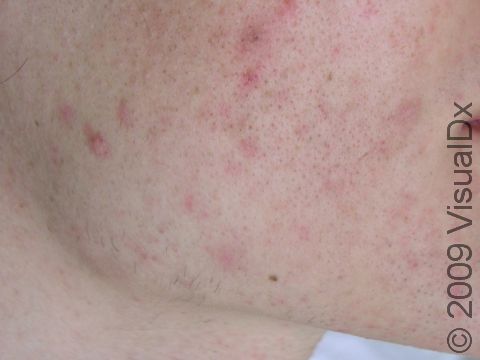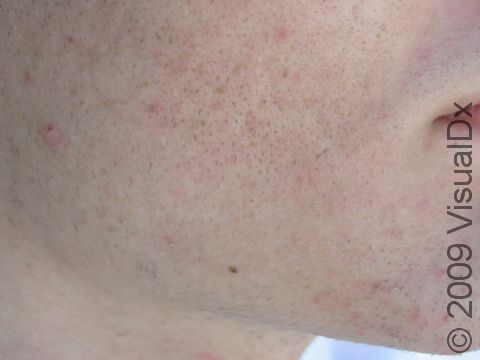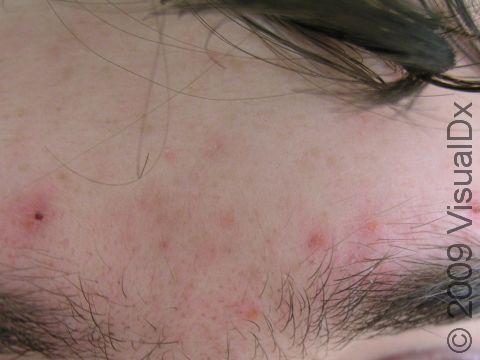Acne Treatment, Laser
Acne laser treatment is a type of therapy that uses lasers or other light treatments to reduce acne. The treatment works by killing acne-causing bacteria, reducing skin oil production, and reducing inflammation. These treatments may be used alone or in combination with prescription topical or oral acne medications. Laser treatments are effective for various types of acne, including inflammatory acne and acne scars.
Your medical professional, such as a dermatologist, can describe the various types of lasers and light therapies used to treat acne. Common types of lasers include CO2 lasers, pulsed dye lasers, and diode lasers, each suited for specific conditions. Note that no one laser or light treatment can treat all types of acne. Additionally, while laser and other light treatments can help reduce acne, they are likely to provide only partial improvement, and results vary from person to person.
Multiple treatments over several sessions may be needed to achieve optimal results.
Pretreatment Preparation
Before your laser treatment:
Prior to acne laser treatment, follow your medical professional’s instructions completely.
Generally, it is recommended to avoid sun exposure for a period prior to treatment:
- Use a 50 sun-protection factor (SPF) broad-spectrum (meaning it protects against UVA and UVB rays) sunblock daily and re-apply periodically if in the sun.
- Avoid outdoor activity during peak sun hours (10 AM to 3 PM).
- Wear sun-protective clothing, such as long sleeves and a wide-brimmed hat.
- Sit in shady areas when outdoors.
What to Expect During Your Visit
Your medical professional may prescribe an antiviral medication prior to the procedure, especially if you are prone to oral herpes simplex virus outbreaks (cold sores). In the office, numbing cream will be applied to the affected area 45-90 minutes prior to the procedure. Eye protection will be worn by both the patient and laser professional. Once the skin is cleaned, a handpiece is placed over the skin and pulses of light are emitted. Laser treatment is usually fairly quick for a small- to medium-size area but may take longer for large areas. Depending on the method used, some people note pain during the laser treatment, which has been described as feeling like a superheated needle briefly entering the skin.
What to Expect After Your Visit
After laser acne treatment, the skin will often be red or darker than the surrounding skin, swollen, and painful or tender. The skin will typically heal within a few hours to days, depending on the treatment.
Follow-Up Care
Following acne laser therapy treatment, it is important to follow your medical professional’s instructions carefully.
- Avoid sun exposure until your skin heals, and follow gentle skin care to help prevent future breakouts.
- Use noncomedogenic moisturizers and gentle cleansers to keep the skin hydrated and clean.
- Avoid using harsh or abrasive skin-care products that may irritate the treated skin.
Risks and Potential Side Effects
Acne laser treatment is generally considered safe, but it does carry some risks. The most common side effects of acne laser treatment are skin color changes (ie, redness or areas that are darker than the surrounding skin) and swelling. These side effects are usually mild and disappear within a few hours or days. Other side effects that can occur include pain, burning, and blistering. More permanent changes in your skin color and scarring are also possible. In darker skin colors, scarring (eg, keloids) and skin darkening (hyperpigmentation) are more common than in lighter skin colors. Seeing a board-certified dermatologist for acne laser treatment, especially one who frequently uses lasers, can help prevent these side effects.
When to Seek Medical Care
Following acne laser treatment, contact your medical professional if you experience:
- Pain that lasts for more than a few days.
- Blistering of the treatment area.
- Darkening of the skin that does not improve within a couple weeks.
- Lightening of the skin that does not improve within a couple weeks.
References
American Academy of Dermatology Association. Lasers and lights: How well do they treat acne?. AAD. https://www.aad.org/public/diseases/acne/derm-treat/lasers-lights. Accessed 2024 Mar 15.
Goh C, Cheng C, Agak G, Zaenglein AL, Graber EM, Thiboutot DM, Kim J. Acne Vulgaris. In: Kang S, Amagai M, Bruckner AL, Enk AH, Margolis DJ, McMichael AJ, Orringer JS, eds. Fitzpatrick’s Dermatology. 9th ed. New York, NY: McGraw-Hill Education; 2019.
Mlacker S, Shafa G, Aldahan AS, Nouri K. Acne. In: Kantor J. Dermatologic Surgery. McGraw-Hill Education; 2018.
Last modified on July 26th, 2024 at 4:35 pm

Not sure what to look for?
Try our new Rash and Skin Condition Finder



